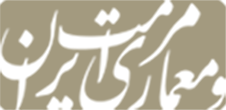

BibTeX | RIS | EndNote | Medlars | ProCite | Reference Manager | RefWorks
Send citation to:
URL: http://mmi.aui.ac.ir/article-1-397-en.html
2- University
Abstract:
Researchers concerned to the related historical textiles are protection and cleaning. Because of the influence of this construction and structure, knowledge base, contamination and methods to deal with it is of utmost importance. In this regard, many researchers have studied, identified, classified and introduced the contamination on textile history. But for reverse engineering design and to achieve performance result and evaluation of detergent or washing mechanism it is necessary for uniform characteristic of contamination. In some engineering science this is known as standard contamination. The purpose of this paper is to evaluate common methods for the transmission of contamination and provide appropriate method on simulated samples with respect to components of extent, quantity and evenness with specific nature (experimental sample, oily). Library and field research studies has reported the collected data through descriptive and experimental methods, content analysis and qualitatively and quantitatively. Three components, extent, quantity and uniformity of contamination level has been measured and evaluated. In the research process, after preparation of fabric and contamination with the benefit of non-automatic flat silk screen method the contamination is transferred to cellulosic fabric. The level of contamination samples is used to calculate the net flow volume, to determine the extent of contamination is by stencil. Reflective spectrophotometer was used to measure the uniform rate of contamination. The quantitative results based on components quantity, extent and uniformity level of contamination shows that the silk screen method can be suitable for transmission of contamination to cloth surface in order to prepare a sample and preparing it for successive test.
| Rights and permissions | |
 |
This work is licensed under a Creative Commons Attribution-NonCommercial 4.0 International License. |



